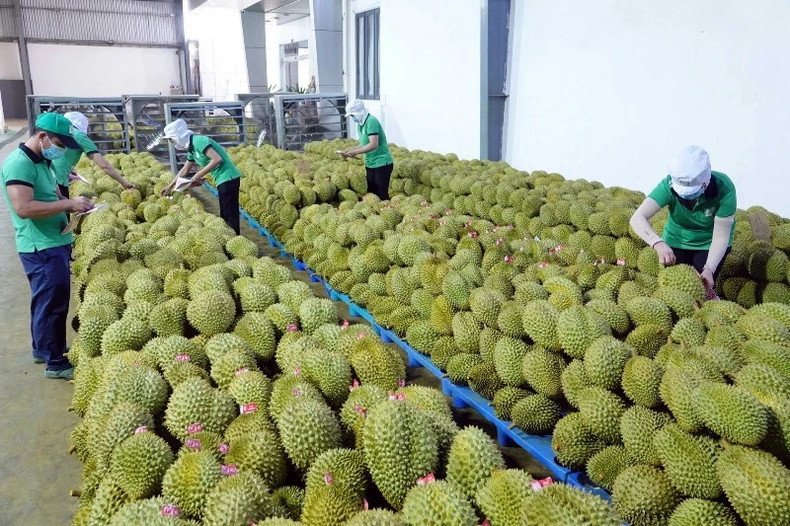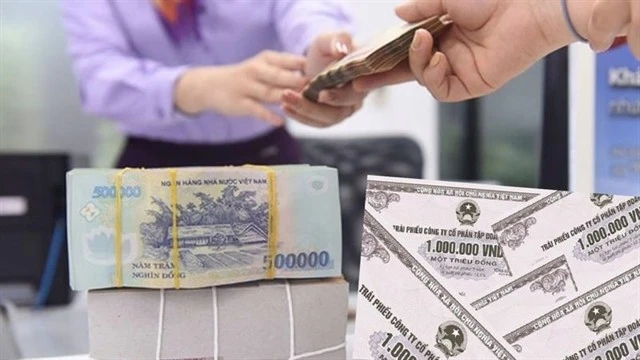Ready to export durian
Dak Lak is currently the leading coffee-growing region in Vietnam and also a major exporter of durian. The province is striving to record the first shipment of frozen durians exported to China immediately after the signing of the protocol on exporting this product between the two countries. Deputy Director of the Dak Lak Provincial Department of Agriculture and Rural Development Nguyen Van Ha stated, that the province awaits guidance from the Ministry of Agriculture and Rural Development.
According to experts, exporting frozen durian offers several advantages because only about 30% of the flesh inside each durian is edible. Exporting fresh durians would require up to three containers for the same weight, while frozen durians would need only one container since the shell is removed. Additionally, exporting frozen durians avoids time pressure, reduces costs, ensures quality, and allows for year-round exports.
General Secretary of the Vietnam Fruit and Vegetables Association Dang Phuc Nguyen noted that frozen durians were previously mainly exported to Thailand, the US and Europe, with annual export values of several hundred million USD. With the door now wide open to China, durian export revenue is expected to see a significant increase. If the Chinese market shifts to consuming frozen durians, Vietnam will gain a substantial competitive advantage.
The opening of the Chinese market is expected to help frozen durian export revenue reach 400-500 USD million, this year. This brings economic benefits and promotes sustainable development, enhancing the quality of Vietnam's agricultural products.
Experts predict that the durian harvest in the Central Highlands provinces will peak in September and October. In 2023, these were the months with the highest durian export value, totalling around 800 USD million.
In the first six months of 2024, China increased its durian imports from Vietnam by 46.3% in volume and 33.3% in value compared to last year, reaching nearly 273.540 tonnes, worth 1.11 billion USD. Vietnam's share of durian in China's total imports increased from 23.73% in the first half of 2023 to 32.81% in the first half of 2024. Given the current favourable market and prices, durian exports in the remaining months of 2024 could bring in an additional 1 USD billion. This is also when Thailand's fresh durian supply gradually decreases, leaving Vietnam’s products in a "market monopoly" position.
 |
| Durian is currently the "top performer" in the fruit and vegetable export sector. |
To avoid missing the opportunity
Exporting frozen durians from Vietnam to the Chinese market will help increase export revenue for the fruit and vegetable sector. However, to ensure smooth exports of this product, businesses must adhere to the established criteria for the product.
Specifically, frozen durians exported from Vietnam to China must be hand-selected to remove spoiled or damaged fruits and ensure they are free from foreign metal contaminants. Additionally, the durians must come from registered durian orchards in Vietnam.
Vietnam will inspect the production, processing, and storage facilities for frozen durians and introduce qualified businesses to the Chinese side. Only companies registered with China will be able to export products there.
The packaging materials for frozen durians must be clean, sanitary, unused, and meet food safety and phytosanitary requirements. During storage and transportation, frozen durians must comply with the International Food Standards – "Code of Practice for the Processing and Handling of Quick Frozen Foods" (CAC/RCP 8-1976).
Thus, packaging facilities for frozen durians must meet standards related to food safety, packaging processes, traceability requirements, and food safety control procedures (HACCP). Additionally, there are requirements for freezing capacity and cold storage.
However, a current challenge is that the technology for freezing durians is still difficult and costly, requiring significant business investment. Fortunately, the proximity of the Chinese market to Vietnam will result in lower transportation costs compared to competitors.
With the news that Vietnam and China are negotiating a protocol for exporting frozen durians, localities and businesses have started building storage facilities and preparing registration documents. Nguyen Van Ha shared that the Dak Lak Provincial Department of Agriculture and Rural Development has already engaged with businesses and is ready to invest in freezing storage, according to the partner’s standards and requirements for exporting frozen durians by 2025.
According to Nguyen Thi Huong, Director of G1 Import-Export Cooperative, in preparation for exporting frozen durians, the cooperative has invested in four cold storage facilities with a total area of 5,000 square metres, and a daily storage capacity of up to 18 tonnes.
The demand for durians in the Chinese market is expected to continue growing thanks to increasing consumer preference. Although there is no specific figure for the annual consumption of durians in China, it is evident that durians are very popular, especially in major cities like Beijing, Shanghai, and Guangzhou.
In the near future, the Ministry of Agriculture and Rural Development will continue to work closely with Chinese authorities to ensure the smooth implementation of the protocol and support Vietnamese businesses and farmers in maximising opportunities from these agreements.
















